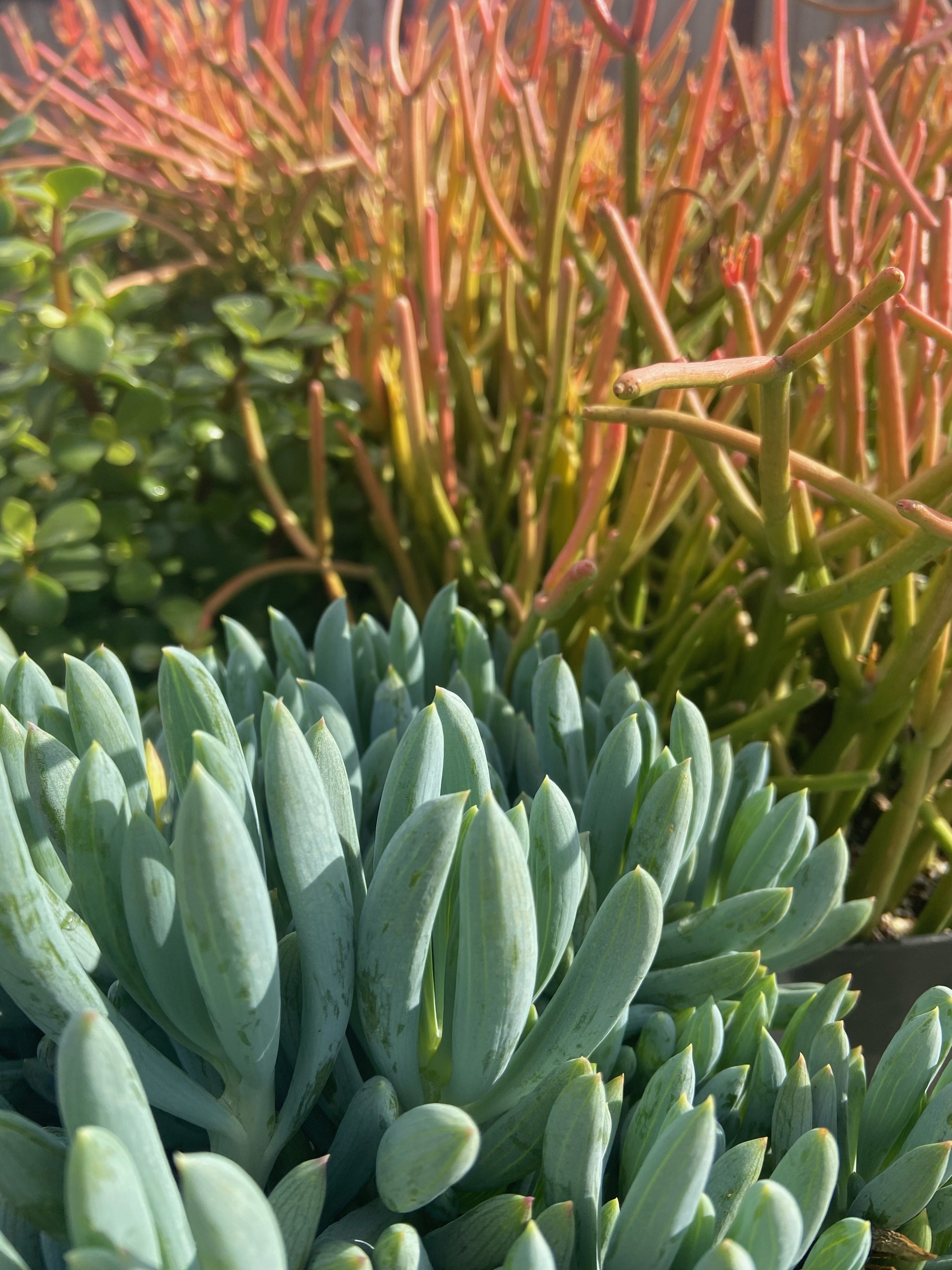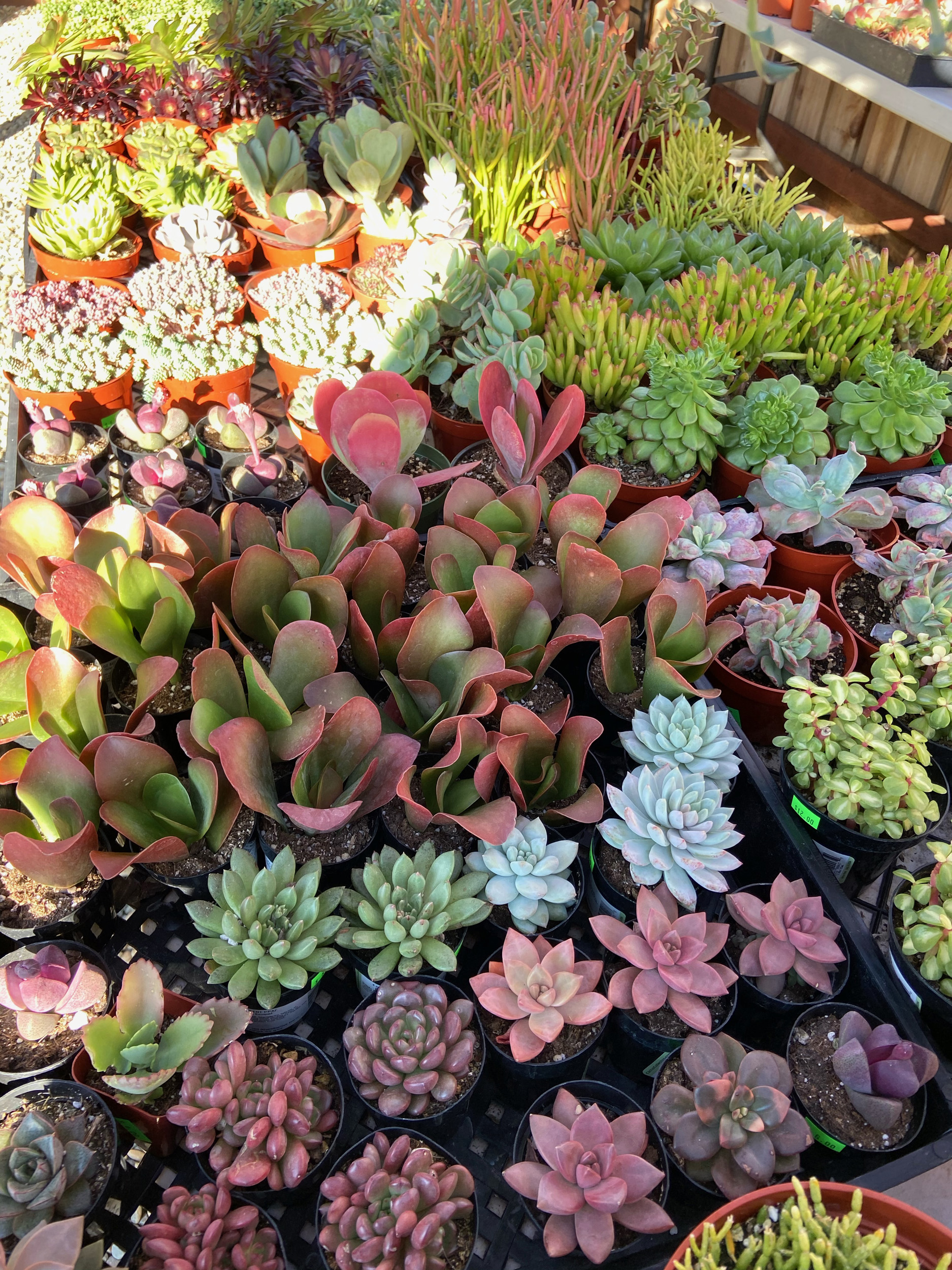Things you should do for your succulents to thrive
1. Lighting……
Most succulents need about 6 hours or more of sunlight each day to ensure proper growth and health of the plants. While many succulents can tolerate full sun, many prefer part sun/filtered light. Good rule of thumb if you’re not sure of light exposure, start out with heavy morning sun and see how they do. Slowly move them to heavier sun as tolerated.

2. Mastering their watering needs….
Most succulents benefit from a good soaking, I water until it comes out in the bottom of the pot, wait until the soil is completely dry to water them again. I typically water weekly in the summer, sometimes twice weekly if we have very hot temps during the week. In the winter I water about every 3 weeks if it doesn’t rain. Succulents do like water, just not daily. The best part is if you forget to water, or go away for a few weeks you can rest assure your succulents will be happily waiting for you when you get home. They will still be beautiful and happy. Some succulents will get angry and show their gorgeous colors when water is withheld. Try it with Euphorbia Firesticks and Kalanchoe Flapjacks!

3. Choosing your potting soil…
Most potted plants use a standard soil mix and it works for them. Succulents are designed to survive the most extremes of the environment and standard potting soil cant work for them. Once you get your succulents home and are ready to transplant, use a soil that emulates that of a desert and ensure half of the soil in the pot is inorganic-like by adding perlite. I use cactus/citrus soil found at most garden centers and like to add perlite for added drainage.

4. Combat little pesky bugs…..
Unfortunately succulents can and will at sometime in their life get mealy bugs, spider mites and or aphids. They are annoying and can cause harm to your plants, especially if the infestation is bad. It can be caused by overcrowding and not enough air circulation. I’m always looking at my plants and if I see them, i’m ready to attack and protect my succulents. I use a generic bug killer found at local hardware stores that’s safe for flowers.





